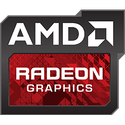AMD's cheapest Zen 4 X3D processor is shaping up to be its most popular. Sales numbers from Germany's Mindfactory posted by TechEpiphany seemingly shows the recently launched
Ryzen 7 7800X3D outselling last year's
Ryzen 7 5800X3D nearly 2:1, with 4,720 7800X3Ds selling to the 5800X3D's 2,510 over a few week period. While these figures show sales for only a single region, evidence for this momentum is reflected in other regional retailers as well as some global outlets. On Amazon, for example, the 7800X3D has made a frequent appearance on the top 10 best selling CPUs list, with the rest of the Zen 4 lineup trailing well behind. Newegg reports the 7800X3D to be among the top 5 best selling CPUs on the site at time of writing. Microcenter also shows the 7800X3D and 5800X3D side-by-side in seventh and eighth places respectively for popularity.
Despite recent troubles with the AM5 platform and Zen 4 X3D processors, the Ryzen 7 7800X3D is proving to be quite a success for AMD. The 7800X3D
in our review was shown to be one of the most efficient processors we've ever tested, and offered gaming performance at or near the top of the charts across the gauntlet of games and resolutions thrown at it. The staggered release of the 7000X3D lineup, with the 7950X3D and 7900X3D launching first and the 7800X3D launching later, gave early signals that AMD knew what they had and wanted to push as many early adopters away from the better value chip as they could. Pricing for the Ryzen 7 7800X3D has been steady since it released, however we've already seen retailers offering discounts on the
Ryzen 9 7950X3D and
Ryzen 9 7900X3D, as they presumably struggle to sell as well as the more aggressively positioned 7800X3D.







































































